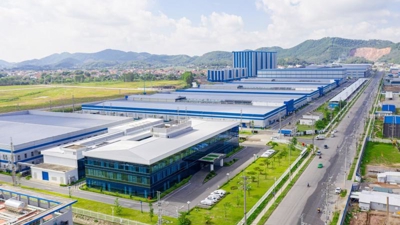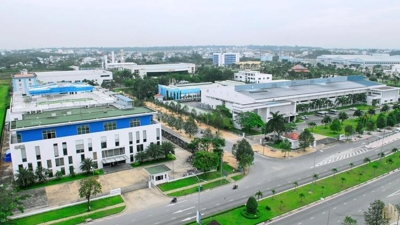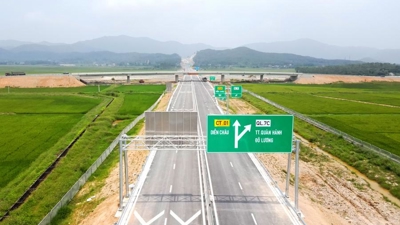Adjustments proposed to the National Power Development Plan VIII
The proposal by the Ministry of Industry and Trade is based on the current state of the power development process.

After nearly four years of deliberations, the National Power Development Plan between 2021 and 2030 (National Power Development Plan VIII) was approved in May 2023 with goals centered on energy transition, the development of a renewable energy ecosystem, and electricity import-export.
However, the Ministry of Industry and Trade (MoIT) recently sent a document to relevant ministries, state energy corporations, and related units, requesting feedback on a draft proposal to the Prime Minister for adjusting the National Power Development Plan VIII.
The reason, according to the ministry, is that projected electricity supply between 2025 and 2030 faces significant challenges, with a potential risk of peak capacity shortages during the dry season. Moreover, the approved power projects are not progressing on schedule, raising concerns about future electricity shortages.
In a detailed report, authorities stated that between 2021 and 2025, the nationwide commercial electricity growth rate is expected to reach 9.08% annually. In reality, the growth in the first seven months of this year was 13.7%, significantly higher than the under 5% growth seen between 2021 and 2023.
Thus achieving the projected commercial electricity growth rate from 2021 to 2025 seems unlikely. Therefore, it is necessary to reassess and update the socio-economic situation to accurately gauge electricity demand as a basis for projecting power and grid development in the next phase.
Additionally, many important power sources such as gas and coal are struggling to meet the operational deadline set for 2030. Thus, adjustments to the plan are necessary to replace delayed projects and ensure feasibility and power supply.
For instance, the plan aims to have 23 gas power projects with a combined capacity of 30,424 megawatts by 2030. However, only the O Mon 1 plant has come into operation, while the Nhon Trach 3 and 4 projects, currently at 92% completion, are expected to become operational by May 2025.
Other gas power plants, such as those in the Block B gas project chain, the Blue Whale gas project chain, and projects like Hiep Phuoc 1, Ca Na, and Nghi Son, remain in various stages of contractor selection, contract negotiation, and feasibility study approval, with none expected to be completed by 2030 without significant intervention.
In the coal sector, by 2030, only 3,380 MW of coal power will be brought online, and further development will cease according to Vietnam’s commitments. However, five coal-fired projects, including Cong Thanh (600 MW), Nam Dinh I (1,200 MW), Quang Tri (1,320 MW), Vinh Tan III (1,980 MW), and Song Hau II (2,120 MW), are facing delays due to shareholder changes and financing difficulties.
Coal-fired projects have also encountered opposition from local authorities and financial institutions, with stricter environmental requirements and challenges in securing financing making new coal power projects less feasible.
Hydropower, with a total capacity of 29,346 MW by 2030, according to the plan, also faces limitations due to insufficient capacity and potential development risks.
Additionally, renewable energy, particularly wind power, is unlikely to meet the scale outlined in the plan, including both onshore and nearshore wind (21,880 MW) and offshore wind (6,000 MW). Solar power projects are also being reassessed to better align with current realities.
Given that large power sources like coal and gas are not being developed sufficiently, authorities have suggested expanding solar power development. Solar power projects can be implemented quickly and help meet short-term electricity demands.
Under the current plan, installed capacity of solar power will stand at 12,836 megawatts by 2030, with a target of 168,594-189,294 megawatts by 2050. Thus, only an additional capacity of 1,500 megawatts of solar power will be developed from now to 2030.
Other power sources may also be prioritized in the event of a plan adjustment. For example, according to the National Power Development Plan VIII, biomass and waste-to-energy power will have a total capacity of 2,270 megawatts by 2030.
However, many localities have proposed adding more of these projects to the plan, citing environmental benefits. As such, the MoIT believes these sources should be given greater priority.
Pumped storage hydropower, battery storage, and electricity imports from Laos are also considered necessary to enhance the capacity to meet demand and reduce the risk of power shortages in the coming years.







